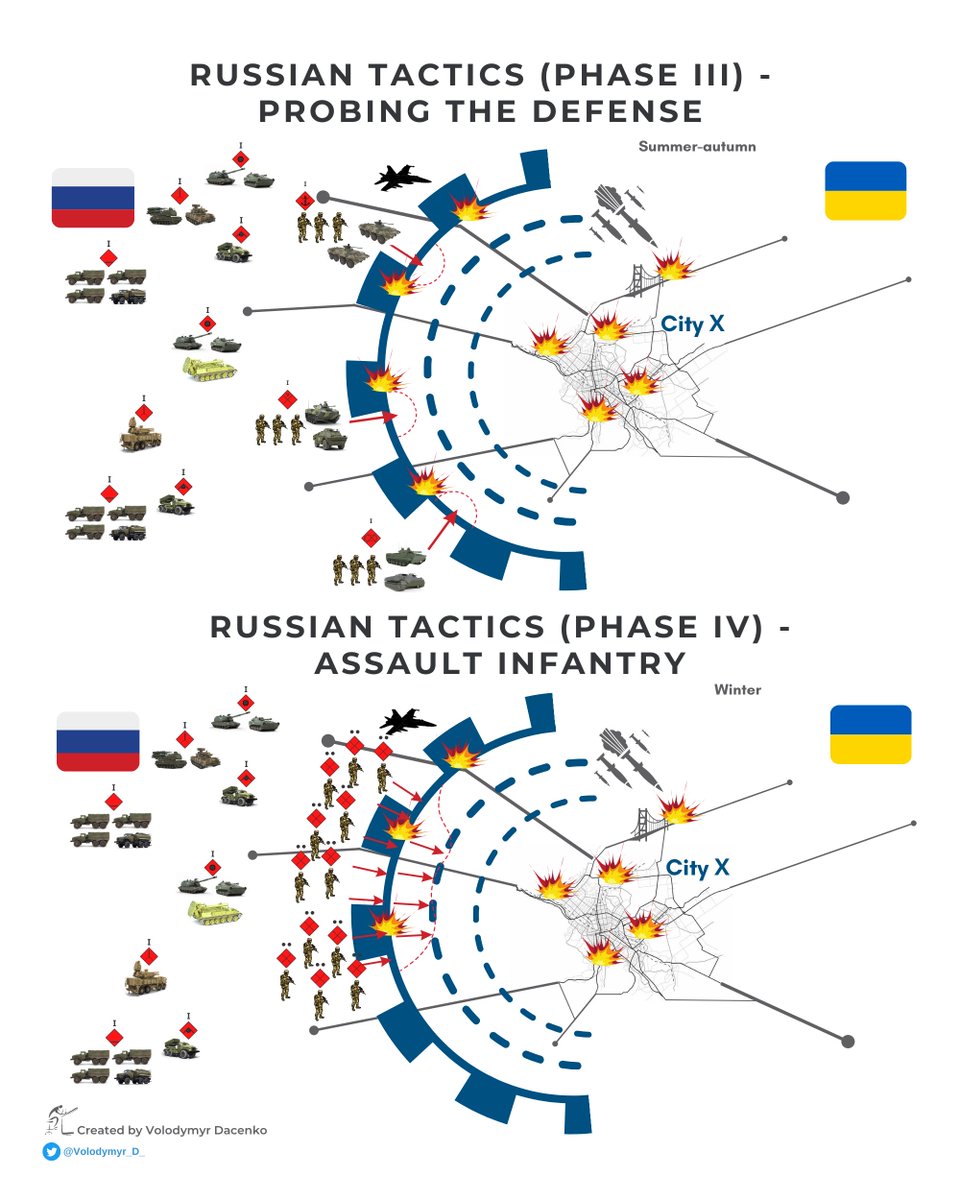
Losses in wars
I decided to compare losses in different wars in order to understand how big Russia's losses are in this war
1/12
#RussianArmy #RussiaUkraineWar #UkraineRussiaWar
I decided to compare losses in different wars in order to understand how big Russia's losses are in this war
1/12
#RussianArmy #RussiaUkraineWar #UkraineRussiaWar

2/12 Average daily losses of the main attacking country:
1. Germany (World War II) - 2415 killed soldiers per day.
2. USSR (Finnish War 1939) - 1440
3. Germany (World War I) - 1280
4. Russia (Ukrainian war 2022) - 380 (about 650 per day after mobilization).
1. Germany (World War II) - 2415 killed soldiers per day.
2. USSR (Finnish War 1939) - 1440
3. Germany (World War I) - 1280
4. Russia (Ukrainian war 2022) - 380 (about 650 per day after mobilization).
3/12
5. North Korea (Korean War 1950) - 337
6. Russia (Russian-Japanese War 1904) - 115
7. Russia (First Chechen War 1994) - 22
8. USA (War in Vietnam 1964-75) - 20
9. USSR (Afghan War 1979-1989) - 4
10. USA (Iraq War 2003-2009) - 2
5. North Korea (Korean War 1950) - 337
6. Russia (Russian-Japanese War 1904) - 115
7. Russia (First Chechen War 1994) - 22
8. USA (War in Vietnam 1964-75) - 20
9. USSR (Afghan War 1979-1989) - 4
10. USA (Iraq War 2003-2009) - 2
4/12 As we can see, Russia's daily losses are about 20 times greater than the US's losses in Vietnam and Russia's losses in the First Chechen War.
5/12 Obviously, the duration and success of war depend on resources. And one of the most important resources of war is soldiers.
6/12 In order to calculate the potential of a war, the ratio of average daily losses (killed and wounded) to the total number of engaged troops was chosen.
7/12 Example:
The strength of the USSR army in the war against Finland in 1939 was 1 million soldiers.
Average losses - 3365 soldiers per day.
Loss intensity = 3365/1000000=0.336% per day
The strength of the USSR army in the war against Finland in 1939 was 1 million soldiers.
Average losses - 3365 soldiers per day.
Loss intensity = 3365/1000000=0.336% per day
8/12 Below is an indicator of the intensity of losses of individual countries (attacking side) in various wars.
This indicator shows a fairly clear dependence of the duration of wars (wars that do not achieve complete success) on the intensity of losses.
This indicator shows a fairly clear dependence of the duration of wars (wars that do not achieve complete success) on the intensity of losses.
9/12 Protracted wars are characterized by a loss intensity of less than 0.05% per day. With a loss intensity of more than 0.3% per day, the war usually does not last more than 2-3 months.
10/12 Ru current rate of loss is about 0.144% per day. This may indicate that Russia will be able to continue the war for about two years. Prolonging the Russian war requires significant qualitative changes on the battlefield. Including the effectiveness of the use of soldiers
11/12 Given the relatively small number of forces, such dynamics of losses are unlikely to allow conducting a multi-year campaign.
12/ It is worth noting that the increase in the size of the army, after partial mobilization, led to a proportional increase in the rate of losses. If in the summer the number of killed soldiers was estimated at 200-300 per day. After November, this indicator exceeds 500 per day
• • •
Missing some Tweet in this thread? You can try to
force a refresh












